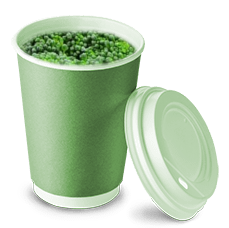Powdered broccoli on path to less waste
 CSIRO is trying to reduce food waste by adding broccoli to coffee.
CSIRO is trying to reduce food waste by adding broccoli to coffee.
Researchers have developed a powder made from imperfect-looking broccoli that would previously have been wasted, which provides approximately one serve of broccoli in every two tablespoons of powder.
The scientists have enlisted a Melbourne café to brew a broccoli latte, with mixed reviews.
Test subjects report broccoli lattes have a distinct ‘woody’ or ‘leafy’ taste, Hort Innovation chief John Lloyd says the powder could be mixed into smoothies, soups, baking and as a way of hiding broccoli from fussy kids in meals.
“With a rising trend in healthy eating across the board, Australian growers are always looking at ways to diversify their products and cut waste while meeting consumer demand,” Mr Lloyd said.
“Research shows the average Australian is still not eating the recommended daily intake of vegetables a day, and options such as broccoli powder will help address this.”
The 100 per cent broccoli powder is made from whole broccoli, and produced using a combination of selected pre-treatment and drying processes to retain the natural colour, flavour and nutrient composition of fresh broccoli.
Lead researcher, CSIRO’s Mary Ann Augustin, said the broccoli was high in protein and fibre, and health-promoting bioactive phytochemicals, making it an ideal candidate for powder development.
“The powders are an option for farmers who want to produce value-added vegetable ingredients for the lucrative functional food markets,” Dr Augustin said.
“The broccoli powder has already been used for the production of extruded snacks with high vegetable content.
“Prototype extruded snacks with 20-100 per cent vegetable content were displayed during National Science Week at the Queen Victoria Market last year and were well-received by parents and even by kids.”
The broccoli powder, and associated extruded snacks, are being developed as part of a larger research and development project which aims to reduce vegetable waste by creating healthy food products from ‘ugly’ produce.
The next steps, Dr Augustin said, are to take the powder into further product development and consumer sensory evaluation trials.







 Print
Print